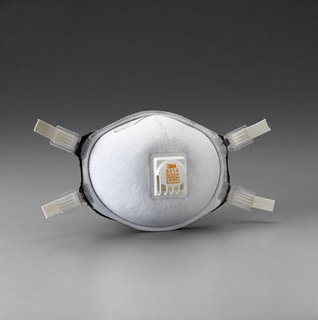OSHA has issued a standard -- or at least revised part of a standard.
This increasingly rare phenomenon happened on August 23 when Assistant Secretary Ed Foulke announced that new Assigned Protection Factors (APFs) for respiratory protection programs are being incorporated into OSHA's respiratory protection standard. But lest you think that OSHA has turned the corner and has decided to issue truly protective standards, this one (like the previously issued hexavalent chromium standard) is yet another cave-in to industry.
What are APF's and what are we talking about?
The use of respirators has always been controversial. Considered the least effective form of protection (less than "engineering controls" like ventilation or separating the worker from the chemical, for example), the use of respirators have often been preferred by employers because they are seen as cheaper and easier than installing ventilation systems. OSHA chemical standards list respiratory protection as a last resort while engineering controls are being installed or where engineering controls just aren't practical.
Part of the problem is that employers often "forget" that respirators have to be "fit tested" to ensure that they fit different shapes of faces without leaking, and that employees have to be trained and receive a medical examination before being issued a respirator. Employees generally don't like respirators because they're hot and uncomfortable, especially if they have to be worn all day.
Another important respirator issue is how well they work. In other words, how high a concentration of chemical is allowable when wearing different kinds of respirators. There are a number of different types of respirators that work in different ways and have different levels of effectiveness. The most effective would be a Self Contained Breathing Apparatus (SCBA), where workers breathe through full face masks from tanks of breathable air. On the other end of the spectrum are the respirators that you see most often: traditional rubber (elastomeric) masks with cartridge filters and new paper masks (filtering facepieces) that breathe through the entire mask surface (see photos below, courtesy of the Laborers International Union)

 The question that APF's attempt to answer is what type of respirator you need to protect yourself, given a certain level of chemical in your environment. That's where APF's come in. If you know what level of a toxic chemical is in the air you're breathing, you can use APF's to let you know what kind of respirator is adequate.
The question that APF's attempt to answer is what type of respirator you need to protect yourself, given a certain level of chemical in your environment. That's where APF's come in. If you know what level of a toxic chemical is in the air you're breathing, you can use APF's to let you know what kind of respirator is adequate.It's all a bit complicated, but an article in the Laborers Lifelines magazine attempts to explain it:
The respirator supplied in various situations is based on the hazard faced (e.g. dust respirators for exposures to dusts and gas and vapor respirators for exposures to gases) and the expected level of exposure. The goal, according to OSHA, is to make sure exposure inside the mask does not get above the OSHA permissible exposure limits (PELs). Thus, if a standard allows exposures to 1 mg/m3 of dust and exposures are expected to be less than 10 mg/m3, then a mask with an APF of 10 should provide enough protection.The Lifelines article also explains how this new announcement is a sell-out to industry:
The most controversial part of the new APFs is the lack of any distinction between traditional rubber (elastomeric) masks with cartridge filters and new paper masks (filtering facepieces) that breathe through the entire mask surface. Both are given an APF of 10. This decision was based primarily on data from the respirator manufacturers. Labor unions, including LIUNA, and many other groups testified that filtering facepiece masks should only get an APF of 5 because they do not seal as well against the face to keep out contaminants. A 5 would mean they only protect half as well. Yet, OSHA sided with the manufacturers who have been promoting the filtering facepiece masks which have become a larger share of their business.Yeah, yeah, so what else is new.
Read the whole article. It also contains Laborers Health and Safety Director Scott Schneider's "7 Deadly Sins of Respirator Assigned Protection Factors," which explain how you can't completely trust APFs -- or respirators -- anyway because full protection depend on things like always wearing respirators correctly, knowing the accurate concentration of chemicals outside the mask and assuming that the amount you're exposed to is steady all the times, without high peaks. And, of course, it all depends on whether we trust OSHA's Permissible Exposure Limits for hazardous chemicals to be protective -- remembering that the vast majority of them are based on research from the 1950's and 1960's. But that's another long, sad story.
More on using respirators properly here, and more on the APF controversy here.